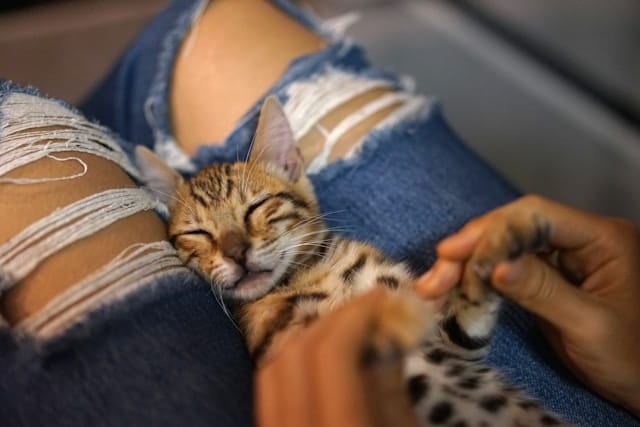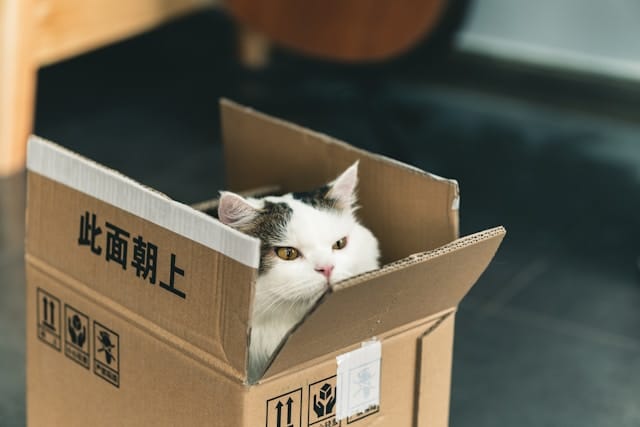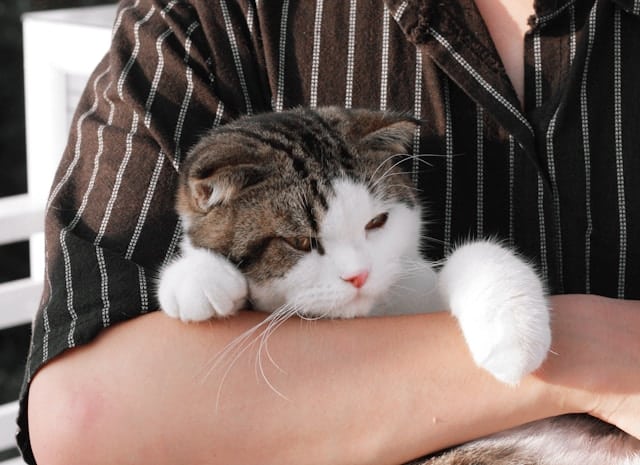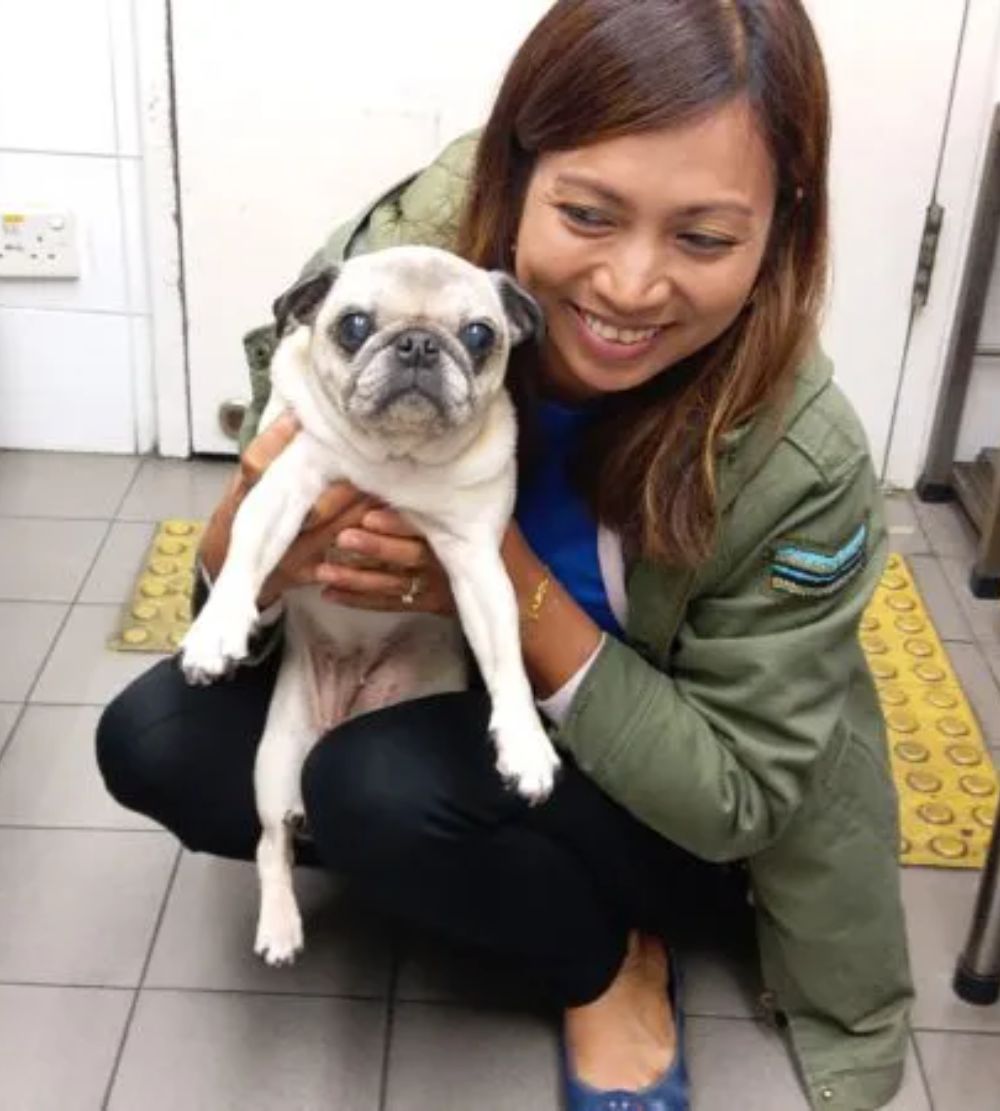At Ferndale, our mission is to support devoted pet parents – people who go the extra mile to keep their furry family safe and cared for during life’s biggest moves. As we build the safest pet travel service in Asia, one question we often hear from cat owners is: “What if my cat needs the bathroom mid-flight?” The good news is, with a little preparation, most cats handle flying surprisingly well – even at 35,000 feet. Flying isn’t natural for cats, and airplane travel presents unique challenges we can’t completely fix. But we can plan ahead, reduce stress, and protect their comfort as much as possible.
🧳 Types of Travel Setups for Cats
Nowadays, most cats still travel in the cargo hold (via cargo ticket or as checked baggage) in a rigid plastic crate. Some cats—depending on the airline, destination, and their size/weight—can travel in a soft bag in the cabin.
In either scenario:
- These travel carriers are too small to fit a litter tray (space constraints).
- Airlines prohibit loose litter due to risk of spillage and mess. Litter can scatter during handling or turbulence, and wet litter or clumping types can turn to sludge and stick to the cat or the crate.
- Even if a tray could technically fit, most airlines will not accept it due to IATA container standards and hygiene protocols.
🐾 So… How Do Cats Go to the Bathroom on a Plane?
Most cats hold it in during the flight. Cats are naturally clean animals and tend to avoid urinating or defecating in stressful or unfamiliar environments—like an airplane cabin or cargo hold—unless absolutely necessary. On flights under 6–8 hours, they often don’t go at all.
However, here are the main ways it’s handled depending on the travel setup:
✈️ Kitty In the Cabin
- Absorbent Pee Pads: Line the bottom of the cat’s carrier with an absorbent pee pad, just in case. Most cats won’t use it, but it helps manage any accidents. Alternatively, you can use vet fleece liners, which are washable, wick moisture away from the surface, and are soft for your cat to rest on.
- Collapsible Litter Tray (Optional): On transit flights or during airport layovers, some owners bring a small, collapsible litter tray and take their cat to a secure baby-changing or toilet room to allow them to use it. This only works if your cat is leash-trained, calm, and the room is escape-proof.
Important: Cats must remain in their carrier during the flight. This means any litter tray use must happen during pre-boarding, layovers, or post-landing—not mid-flight in the cabin.
🧳 Kitty In the Cargo Hold
- Absorbent Bedding or Pee Pads: Use absorbent material inside the crate—pee pads or vet fleece liners are best. Ensure they are secured under the crate’s base to avoid bunching.
- No Litter Trays Allowed: Airlines almost universally prohibit litter trays in cargo crates due to hygiene and safety rules.
🚨 Travel-Specific Risks
Long flights or travel delays increase urine retention time, and when combined with stress, this can trigger cystitis risks also known as Feline Lower Urinary Tract Disease (FLUTD). Dehydration makes urine more concentrated, worsening the problem. To reduce the risk:
- Keep your cat well hydrated in the 24 hours before travel
- Add water to wet food the day before departure
- Watch for symptoms post-travel such as frequent attempts to urinate, or crying in the litter box.
If your cat has a history of urinary problems, speak to your vet about calming supplements, prescription urinary diets, or short-term medications like gabapentin to reduce travel-induced stress.
🛫 Extra Vet Tip- Pre-Flight Preparation
Carrier Familiarization: Get your cat used to the crate weeks or months in advance. Let them eat, sleep, and relax inside it. Allowing them to spend time inside to reduce anxiety on the big day.
🩺 Bottom Line
Thousands of cats travel safely every year. With a little yours can too. If your cat has a history of urinary issues or other health concerns, it’s wise to get veterinary advice before flying.
If you can fly your cat in cabin, that maybe best as then there’s more chance to help with the toilet issue. But saying that, the travel crates in the hold are a lot bigger and also it’s quieter down there so there are pro’s and con’s for each method. Clearly cats are not the best travellers. But as part of the family, we have to do our best to keep everyone together and make the travel situation as smooth as possible in the circumstances. And if you want peace of mind that every step is handled with expertise and care, we’re here to help. At Ferndale, we’ve guided countless families through safe, stress-free pet travel – and we’d be honoured to do the same for yours.
Click Here For Shipping Enquiry
Frequently Asked Questions
Can my cat pee in a carrier?
Technically yes, but most don’t. Cats often hold it. Line the carrier with pee pads or fleece just in case.
Should I feed my cat before flying?
Feed a small meal no later than 4–6 hours before departure. Avoid feeding right before the flight to reduce the risk of vomiting or the need to defecate.
What if my cat urinates during the flight?
If you're using a pee pad or fleece, it will absorb the urine. Clean it up after landing. It rarely causes harm unless repeated or prolonged.
Should I give my cat water during travel?
Yes. Offer water before boarding. In-cabin cats may drink from a travel bottle during the flight. For cargo cats, hydrate well before drop-off and fill up the water container.
Do cats get dehydrated during flights?
They can on long routes. Hydrating well the day before and offering water before travel helps.
Is it safe to sedate my cat for flying?
Sedation is not recommended for air travel. However, calming aids or mild vet-prescribed medications may be appropriate. Always consult your vet.





